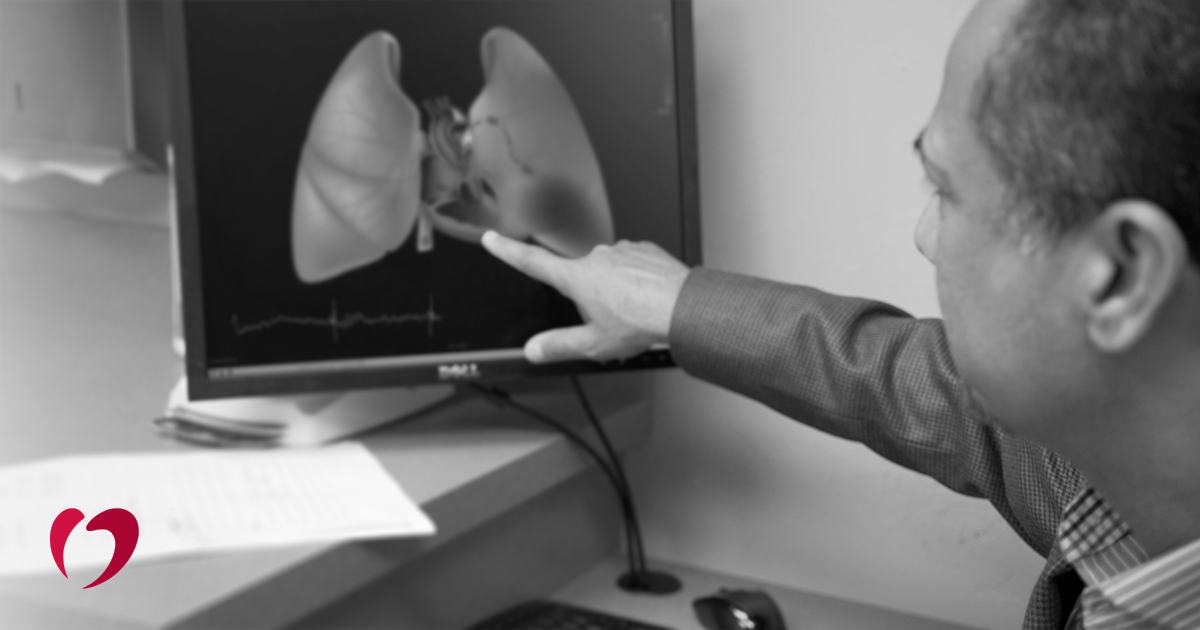What is a Pulmonary Embolism?

A pulmonary embolism is a blood clot that blocks the artery that carries blood from the heart to the lungs. It’s a serious condition that can cause damage to the lungs and low levels of oxygen in the blood. In severe cases, it can be fatal.
The pulmonary artery carries blood from your heart to your lungs. Once the blood receives oxygen from the lungs, it goes back to the heart and then is pumped to the rest of the body. As with blood clots in any part of your body, a pulmonary embolism causes a breakdown in this normal and essential process of blood flow.
Blood clots typically originate in the deep veins of the legs and then may travel to the lungs. These clots are commonly called deep vein thrombosis, or DVT, and they occur when blood can’t flow freely in the legs.
Risk factors for pulmonary embolism
There are several primary risk factors for pulmonary embolism, which are similar to the risk factors for DVT.
- Changes in blood flow due to being immobilized for a long period of time. This can occur due to a long flight or car trip or if you’ve been in the hospital with limited activity or on bed rest for a period of time.
- Increased clotting or hypercoagulability, which can be due to certain medications, recent surgery, pregnancy or smoking.
- Other medical conditions, such as heart disease, stroke or abnormal heart rhythms like atrial fibrillation.
- Trauma to the lower leg that results in damage to a blood vessel.
Symptoms of pulmonary embolism
Symptoms of pulmonary embolism will vary based on the severity of the clot. Potential symptoms include the following:
- Sudden shortness of breath
- Chest pain or pain in the arm, neck, shoulder or jaw
- Rapid pulse
- Cough that may include bloody mucus
- Excessive sweating
- Feeling dizzy or lightheaded
- Lips or nails turning blue
If you experience any of these symptoms, call 911 immediately, as pulmonary embolism is a serious medical condition.
Diagnosis and treatment
Your doctor will examine your legs and arms for any signs of deep vein thrombosis and will run tests to check for pulmonary embolism. Diagnostic tests may include blood tests, a chest x-ray, an ultrasound of your heart or aspecialized x-ray using contrast dye called computed tomographic angiography (CTPA).
The most common treatment for pulmonary embolism is use of anticoagulant medications, also known as blood thinners. These medications prevent additional clots from forming by decreasing the blood’s ability to clot. Your doctor may also advise the use of compression stockings to help prevent future clots from forming in your legs.
In some cases, thrombolytic therapy may be used to break up the clot. This medication is typically administered in the hospital where the patient can be closely monitored during treatment. In severe cases, doctors may recommend surgery to remove the clot or placement of a filter in a vein to prevent clots from entering the lungs.
If you have a history of DVT blood clots or are at risk for pulmonary embolism, contact the Oklahoma Heart Hospital today to schedule an appointment with one of our physicians.
